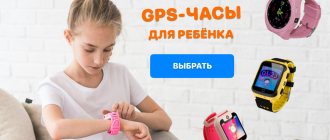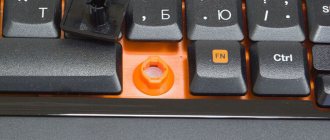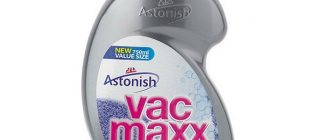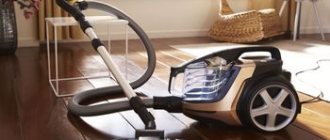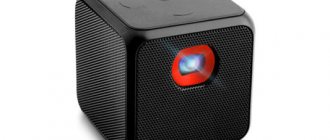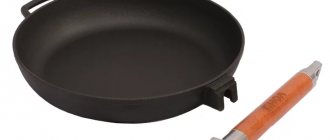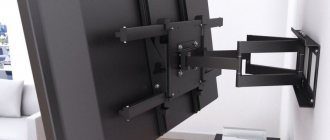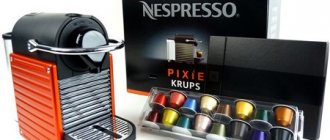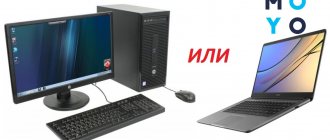Hi all! We continue to introduce you to reviews of the best products for children and their parents. Today I invite you to get acquainted with the top eight best balance bikes for children aged 1 to 3 years. Such small bicycles with wide wheels and a complete absence of pedals have gained popularity all over the world. The principle of riding a children's balance bike is that the baby sits in the saddle and rides, pushing off the road with his legs. Essentially, a balance bike prepares an older child to ride a bicycle. It trains the muscles of the child’s legs, back, arms and abs well, and also develops his sense of balance. The eight balance bikes we presented in the review showed better performance compared to other balance bikes.
So, let's begin our review!
How to choose the best balance bike for a child.
Go to the catalog Balance bikes for children
A balance bike (velokat, velocross) is a stable children's bicycle without pedals on two very wide wheels, designed for children aged 2-4 years. It perfectly develops a sense of balance and trains the baby’s muscles, preparing him for a two-wheeled bicycle. Its advantage is that a small child is not distracted by pedaling, so he will quickly learn to maintain balance. After cycling, children can easily ride a two-wheeled bike, sometimes even without additional side wheels.
Today there are many different modifications of balance bikes, so choosing one can take a very long time. You can only look at the fire longer and choose the first stroller for your child. In this article we will help those who are looking for a balance bike for a child so that the choice is correct and quick. We will tell you about the eight main parameters for choosing a cycling bike, after learning which you will be able to choose the right option in half an hour.
In fact, a balance bike is an absolutely simple thing; it consists of a frame, a fork, two wheels, a steering wheel and a seat. Sometimes shock absorbers, a handbrake, a footrest and a parking stand are added to these elements. To get the right bike, which in a week your little one will happily ride around the yard or park, you need to decide on these elements. So let's get started.
1. Which frame and fork should I choose: metal, wood or plastic?
Wow, it turns out that balance bikes even come with a wooden frame. Amazing, right? In our country, you rarely see a 3-year-old toddler on a children's wooden transport. However, this is only uncommon in Russia, in Europe or America quite often, because the trend of environmental friendliness and naturalness is strong there. In addition, the sidewalks, roads and alleys in the park there are much smoother than ours, so it will be comfortable to ride there on a wooden or plastic bicycle scooter, the advantage of which is lower weight. Parents will sometimes have to carry the balance bike in their hands, but it is better to wear something that is lighter.
But if a wooden or plastic balance bike ends up on our roads, you won’t envy it, much less a small cyclist. The fact is that these materials have very high fragility and very low depreciation. This means that the balance bike will quickly break from such skating, and the baby will not enjoy it. In this case, the advantage of ease will lose its significance for parents. Sometimes it’s better to carry a heavier metal balance bike than to carry a light plastic balance bike with you the entire walk, which sometimes doesn’t want to accelerate, sometimes doesn’t roll up a small hill, sometimes bounces on a dirt road, and can also break at any time. Also, wooden and plastic modifications often do not have adjustable height of the steering wheel and seat.
Among metal frames, it is worth giving preference to chrome-molybdenum and aluminum ones; they are noticeably lighter than conventional steel ones. An aluminum frame is inferior to a chrome-molybdenum frame in that it does not dampen vibrations from bumps encountered along the way, but this problem is well solved by thick inflatable wheels and a shock-absorbing or rigid steel fork. Even the rigid steel fork is slightly springy, absorbing microvibrations, thereby reducing vibration stress on the hands.
Therefore, the answer to this question is: the frame is only metal, preferably chrome-molybdenum or aluminum, the fork is rigid steel or shock-absorbing.
2. How to choose the height of the seat and steering wheel?
The minimum height of the saddle is a very important parameter of a balance bike, especially for very young children. After all, the height of the saddle may be too high for the baby and he will not be able to ride it.
To know what minimum saddle height is suitable for your baby, you need to measure the length of his inner leg, from the crotch to the heel. Since the legs should be slightly bent while riding, 2-3 cm must be subtracted from the measured length. The result obtained will correspond to the height of the saddle at which the baby will ride comfortably. For example, the length of the inner side of the leg is 35 cm, which means that a bicycle bike with a minimum seat height of 32-33 cm will suit him well. You can buy a bicycle scooter with a seat of 34 cm, but then you will have to wait a little until the baby grows up a little or buy shoes with thick soles .
For many models, the saddle height can be increased, usually by 10 cm. That is, the vehicle will grow with the child within two years, and children grow very quickly! We do not recommend buying a bicycle scooter, on which you have to raise the seat by 5-10 cm immediately after purchase, because this option will very quickly become small.
The steering wheel is a little more difficult. In some models, it is also adjustable in height, but often the height of the steering wheel is fixed, and different models have different heights. For example, sports models with shock absorbers have a relatively low steering wheel, because the child will lean on it, for example, Likeabike Jumper has a steering wheel height of 49 cm. Walking balance bikes have a high steering wheel, for example, about 56 cm. With a high steering wheel, the seating position is more vertical, so the baby will be sit more securely in the saddle. But Scott and Puky have steering wheel height adjustment, which is much more convenient.
Answer: measure the length of the inside of the baby’s leg and buy models with adjustable saddle height, preferably with an adjustable handlebar.
So, the frame material and seat height have been chosen, and optimist parents will breathe a sigh of relief after this, especially dads, who were ready to choose their first stroller in 5 minutes right on the market. But it’s still too early for mothers to sigh, because the height of the saddle is a matter of course, and there are still many questions ahead. Dad will sigh again, and Mom will move on to the next point.
3. Which wheels to choose: with inflatable tires, foam rubber or plastic?
Wide inflatable tires are a very good classic shock absorber. Even on bicycles for a long time, this type of shock absorption worked almost alone, unless the saddle was still spring-loaded. Almost all bike tires are quite wide; if you do not inflate them to the hardest level, they absorb perfectly, much better than foam rubber ones.
The advantage of inflatable wheels is that they roll better, which means it will be easier for the child to accelerate. Among 12-inch and 10-inch wheels, it is better to give preference to the former, they have better rolling and shock absorption.
Foam rubber wheels are a little lighter and cannot be punctured by thorns, unlike inflatable ones. If the ride takes place in areas where inflatable bladders will often be punctured, then perhaps you should think about it and give preference to foam rubber. Ask cyclists if they often puncture tubes in the area where your child will be riding. The problem with punctures in inflatable bladders can be solved by pouring a special anti-puncture liquid into them.
Plastic wheels are installed only in the most budget bikes; they are even lighter than foam rubber wheels and are also not susceptible to punctures. But they are very unreliable, quickly fail, have poor rolling and have absolutely no spring, so they are not recommended in any case.
Answer: In most cases, inflatable ones are better, but if there are prerequisites for frequent punctures of the camera, then foam rubber ones are possible.
4. Are additional shock absorbers needed?
We have already said that wide inflatable wheels and a steel fork are a good shock absorber, is additional shock absorption needed in the form of special shock absorbers in the fork and frame? If you see your son’s future on a BMX bike or an extreme dual-suspension bike and he will often jump on a balance bike from curbs and steps, then buy a model with high-quality shock absorbers.
If the child will ride without jumping, then additional shock absorbers are not needed; wide inflatable wheels and a rigid steel fork will do a good job of shock absorption while driving on uneven roads.
Answer: Additional shock absorbers in the fork and frame are not needed for everyday riding.
5. Light or heavy?
Many parents carefully choose a balance bike based on weight, and it would seem that there is plenty to choose from, because the weight of the various models on sale ranges from 2.5 to 6 kg. Lighter weight is positioned by manufacturers as a guarantee of greater speed and better handling. Moreover, this sounds quite convincing, so the higher cost for these models seems justified.
Let's take a closer look at the weight and frame material of different models. It turns out that most often only plastic models weigh lighter than 4.3 kg, and only steel ones weigh heavier than 4.8 kg. It turns out that bicycle racers with the aluminum and chrome-molybdenum frames we selected earlier, rigid steel frames and inflatable wheels usually weigh from 4.3 to 4.8 kg, the difference is only half a kilo.
It would seem that even a difference of half a kilogram is important for the baby, but this is only if he himself carries the bike in his hands, and then the difference is not significant. But why should he carry it in his hands if he can roll it, if not drive it? For driving on asphalt and dirt roads, parks and yards, these 0.5 kg, even 1 kg, do not matter. They will have virtually no effect on coasting and maximum speed.
Yes, parents will sometimes have to carry a bike bike in their hands while walking, but for them these half a kilo does not matter. Of course, if the balance bike weighs up to 5 kg. So, don’t bother too much with comparing the weight of different models, look at the weight, it’s less than 5 kg, which means it’s normal.
The answer is: usually it doesn't matter.
6. Is a handbrake necessary?
Manufacturers of bicycles with brakes claim that the skill of braking with a hand brake must be developed as early as possible. So what, they say, if the child does not learn to use it at 2-3 years old, but gets used to braking with his feet, then at 6-7 years old he will brake with his feet, but already on a bike. Manufacturers who produce bicycle scooters without brakes say that the skill of using a hand brake can be developed no earlier than 5 years.
The truth, as always, is somewhere in the middle. A 2-3 year old child is unlikely to use a handbrake, even if it is available. At 3-4 years old, he will already be able to press the brake handle to brake. But even if he doesn’t learn to use a handbrake at this age, it’s okay, because most bikes on 12 and 14 inch wheels are equipped only with foot brakes. 16-inch versions of bicycles, designed for children 6-9 years old, are equipped with both rear foot and front hand brakes. So, children switching from a balance bike to a bike can easily brake only with a foot brake, because it is easier for them to learn to brake, and then gradually learn to brake with a hand brake. Bicycles designed for ages 9 and up are equipped with only hand brakes, so there will be time to learn.
Our answer: it is not required.
7. Do you need a footrest?
A footrest is an important element, when a child has gained speed and already knows how to keep his balance, he also needs somewhere to put his feet, especially when rolling down a slide. It weighs a little, so let it be better.
Answer: yes
8. Do you need a parking step?
This is not such an important element, but it makes a parked bicycle scooter look more noble. Why lean it against a wall or tree, or throw it on the ground, if you can put it on a step.
Answer: not very important, but better so be it.
Now you know eight precise answers to eight main questions that arise when choosing a balance bike. Where is the most important answer? Which specific model should you choose?
Try to imagine how and where you will walk with your child on a balance bike. If you are going to take a walk in the nearest park or yard so that your baby can just ride for fun, then choose simple, but high-quality and reliable balance bikes from the American company Scott, the Voltage Walker model for a boy, or the Contessa Walker for a girl. Another good option for girls in a beautiful white design is a bike bike from the popular Czech company AUTHOR, model Catty. All these bikes are assembled on lightweight aluminum frames, rigid steel forks and 12-inch inflatable wheels - ideal options for walking in terms of quality and cost. These balance bikes are very reliable; they will be able to please more than one generation of children, passing from their older brother or sister to their younger one. More expensive options for walking are cycling bikes from the German company Puky.
Are you ready to go to the stadium and organize a real balance bike race for your child and his friends? Then choose fast models from Beck, Strider, Begoo.
Maybe you dream of the day when your baby makes his first extreme jump? Then look towards the Likeabike Jumper from Kokua. This balance bike has real shock-absorbing suspension that will soften the shock when jumping over curbs. Well, it will be more comfortable to ride on any uneven surfaces.
It is very important that you like the balance bike. After all, you will have to lift it, carry it, allow or not allow the baby to “ride a little more,” ask the baby not to throw it to the ground and lift it from the ground. And kids are like that, what parents like, they will definitely like, especially such a wonderful thing as a balance bike.
Go to the catalog Balance bikes for children
The best balance bikes for children over 5 years old
There are also several interesting models of balance bikes for younger schoolchildren. They will appeal to children who are still afraid to ride a classic bike. The cost of such products is quite high, but such a bike will last a child until adolescence and can later become a fashionable toy for him.
Rennrad 18″ 2 in 1 – model that transforms into a bicycle
4.9
★★★★★
editorial assessment
94%
buyers recommend this product
A beautiful, stylish balance bike designed for children aged 5 years and older. The new product is equipped with hand and rear brakes, a lightweight aluminum frame, wheels with inflatable tires with a diameter of 18 inches and a comfortable saddle. A chain base with pedals is attached to the rear wheel, and the bike quickly turns into a regular single-speed bike.
Additional features include a parking step and a bell on the steering wheel. The weight of the balance bike is 7.6 kg. After conversion to a bicycle with pedals, the weight of the vehicle increases to almost 10 kg.
Pros:
- Classic style of the model;
- Wide steering wheel with rubber pads;
- Comfortable seat;
- Large wheels;
- The chain base is easy to fix;
- There is a parking step;
- Inflatable wheels absorb shock.
Minuses:
- Heavy and expensive.
The 2-in-1 model from Rennrad will definitely appeal to the child, but for parents it will cost 18.5 thousand rubles. But such a transformer is ideal for learning to ride a bicycle.
Strider 16 Sport – for children from 6 years old
4.8
★★★★★
editorial assessment
90%
buyers recommend this product
See review▶
The Strider model with inflatable wheels will cause no less delight. It can support the weight of a child, teenager or adult up to 85 kg. All-terrain tires will easily go over any surface, even gravel and mud. Tire size – 305 mm.
The anatomical saddle is soft, comfortable and adjustable in angle, length and height. For rider comfort, there are removable footpegs on both sides, built-in front and rear brakes, and a wide handlebar.
Pros:
- Suitable for beginners and experienced riders;
- Inflatable wheels with a diameter of 18 inches;
- The handlebars and saddle are adjusted to the child’s height;
- Two brakes on the steering wheel;
- Removable footrests;
- 4 colors in the collection;
- All-terrain tires.
Minuses:
- Dear model;
- No parking step.
The balance bike is suitable for children with an inseam leg length of 52-67 cm. You can ride it on any road, but be careful - inflatable tires are prone to punctures.
The best children's balance bikes from 2 to 3 years
For the youngest drivers, there are special balance bikes that are lightweight and have a reliable design. A review of the best children's balance bikes will tell you about the most optimal models for the little ones.
Small Rider Jimmy
A lightweight and comfortable balance bike suitable for little ones. The baby will be reliably protected from falls, since there are two wheels at the back. The diameter of the front wheel is 8 inches, and the two rear wheels are 6 inches.
The saddle and handlebars can be adjusted depending on the child’s height. The height of the steering wheel is 40 - 50 cm, the height of the seat is 26 - 36 cm. Small Rider Jimmy will be the best first transport for a child, and will be as safe as possible. It can be used from 1 year old, as the rear wheels can be transformed.
Advantages:
- Several colors to choose from.
- Light weight.
- Easy assembly.
- Transformation of wheels.
Flaws:
- Not detailed assembly instructions.
Hobby Bike Magestic OP503
An excellent bicycle scooter for the smallest driver. The product can be used for a child from 1.5 to 3 years old, but the weight should not exceed 30 kg. At first, the balance bike may not inspire confidence, since it is made of plastic. But in fact, the plastic is of high quality and durable, it is only important to comply with the weight category.
The wheels are also made of plastic and have a diameter of 10 inches. The length of the bicycle scooter is 82 cm. The handlebar is not adjustable in height, its size is 50 cm. The height of the saddle can be adjusted according to height from 31.5 to 35 cm.
Advantages:
- Simple design.
- A light weight.
- The height of the saddle can be adjusted.
- Nice color.
Flaws:
- Plastic bushings instead of bearings.
Chillafish Bunzi
Do you want to buy a balance bike for your child, but don’t know which model to choose? If your baby is between one and a half to three years old, feel free to choose this reliable transport.
The weight of the product is only 2 kg, which means that your baby can easily ride, lift and unfold it. The wide seat will provide a comfortable fit and exceptionally increased comfort while riding.
There is a small handle on the back of the seat. With its help, you can hold the baby for the first time so that he does not accidentally fall. When the child is still very small, you can use a balance bike as a gurney by installing two wheels on the back. When your child masters riding, you can connect two wheels into one, and begin to master riding on a two-wheeled vehicle.
Advantages:
- Wide and comfortable seat.
- High build quality.
- Wheel adjustment.
Flaws:
- Not very stable.
Y-Volution Y-VELO Balance Bike
One of the most optimal balance bikes for children under 3 years old. In general, if the child weighs no more than 25 kg, then the product can be used even after the age of three.
A bicycle balancer will allow your child to quickly learn how to balance. The model looks stylish and beautiful. Available only in red and black colors.
The frame is made of aluminum alloy, which makes the device durable, reliable and lightweight. Its weight is no more than 3.6 kg, so the child will easily control the movement.
The 12-inch wheels have good stability. They are solid and made of plastic. This product is mainly suitable only for good, smooth road surfaces.
Advantages:
- Suitable for children up to 25 kg.
- The saddle is adjustable.
- The optimal handlebar height is 57 cm.
- Easy to transport.
Flaws:
- Wheels made of plastic.
Types of balance bikes
Wheels (for children from one year to 2.5)
For little ones who have barely learned to walk and run, small three- or four-wheeled bicycle scooters are suitable. They are characterized by maximum stability and are absolutely safe for the baby. The maximum permissible weight of the “racer” in these models should not exceed 20 kg.
The frame here is usually made of plastic, which allows you to reduce the weight of the toy to 2-4 kg. The seat is height adjustable, but is still located quite low - 20-25 cm above the ground. Tires can be either solid or inflatable (with a rubber tube inside) up to 8 inches in diameter.
Pros:
- Light weight;
- Excellent stability;
- Ease of transportation.
- Adjustable seat height;
- Bright design;
- Relatively low cost.
Minuses:
- The plastic frame is not particularly reliable - it is better not to overload it;
- Children do not feel the dimensions and cling to obstacles with their rear wheels.
Balancers (from 2 to 4 years)
It’s time for growing fidgets to learn to keep their balance so that later they can switch to regular bicycles without any problems. Balance balance bikes with two wide solid wheels are produced for them (their footprint can reach 15 cm).
Frames are used wooden or plastic, less often - made of aluminum alloy. The weight of the “grown” models has increased to 3-6 kg, but they are able to withstand loads of up to 30 kg. The balancer seat is adjustable in height, so it is quite enough for a couple of years of use.
The tires on such runbikes are almost always solid and rigid, no more than 10 inches in diameter. But there are also more comfortable models - with inflatable rubber wheels that provide decent shock absorption.
Pros:
- Still an acceptable weight;
- Good “carrying capacity” – with a reserve;
- Large selection of models in stores;
- Wide tires give additional stability to the balancer.
Minuses:
- Hard wheels dampen vibrations poorly - inflatable wheels do not have this problem;
- Wooden models do not have the ability to adjust the seat height.
Bicycle scooters (from 4 to 7 years)
Such balance bikes are capable of developing decent speed due to large wheels with a diameter of up to 14 inches, and inflatable tires reduce vibrations on uneven roads. With a dead weight of about 5 kg, the bike skates can easily withstand a load of up to 50 kg - all thanks to the durable aluminum frame.
As a rule, balance bikes for preschoolers turn out to be the most functional (as far as possible given their primitive design). Here the height of not only the saddle, but also the steering wheel is adjusted, hand brakes and footrests appear - in case the child wants to ride down the slide.
Pros:
- Develop good speed;
- Lightweight, but at the same time quite strong and durable;
- They have wide possibilities for height adjustments;
- You can put your feet on the stand and ride with the breeze;
- Often equipped with brakes.
Minuses:
- Not cheap;
- Some models have steering wheels that are too wide for a child.
Transformers
These models cover a wider age category - from about one year to 5 years. It's just that transformers can turn from three-wheeled gurneys for little ones into two-wheeled balance beams for older children.
Alas, their height adjustment capabilities are not very different from standard runbikes. Except that the seat rises a little more off the ground when the rear wheels move together.
Transformable balance bikes usually weigh no more than 4-5 kg, but can support a child weighing 30-40 kg. The frames of such models can be plastic or aluminum; manufacturers also install different wheels: both inflatable and rigid, with a diameter of 8 to 12 inches.
On sale you can find balance bikes that, when folded, turn into a full-fledged scooter, a winter snowmobile on skis, or a children's two-wheeled bicycle (if the kit includes removable pedals). Their weight is usually a little more and reaches 7-8 kg, but the permissible load also increases to fully adult 50-70 kg.
Pros:
- The 2-in-1 design is always a good saving;
- Light weight, but very decent “carrying capacity”;
- Height-adjustable seat and steering wheel;
- The ability to make a balance bike at least a little more compact for storage in a small apartment.
Minuses:
- Quite a high cost.
Which balance bike to choose
1. If you need a runbike for a child under 2-2.5 years old, it is best to purchase an inexpensive plastic model with three or four cast wheels and a dead weight of 2-3 kg. No additional accessories are needed here, although a carrying handle or a small glove compartment for children's things would be useful.
2. For children under 4 years old, it is better to take an aluminum bicycle bike weighing no more than 4-5 kg. It is advisable to choose inflatable wheels so that you can drive even on uneven roads. The presence of a brake is at your discretion: it is not mandatory, but it will not particularly interfere. Also suitable for this age are transformable models, which can initially be used as a three-wheeled balance bike, and over time turn it into a balancer.
3. Are you looking for a Kinder device for children aged 4-7 years? Feel free to take a steel or aluminum bike with inflatable tires. Ideally, it will be equipped with a footrest and a hand brake. Preference should be given to models where the height of not only the saddle, but also the steering wheel is adjustable.
4. If you want to save money and space in your apartment, take a closer look at transformable balance bikes. They can replace your scooter or first bicycle and will serve your child much longer than 1-2 seasons. It is important here that the frame is made of steel or aluminum alloy; everything else depends on the type of transformation.
